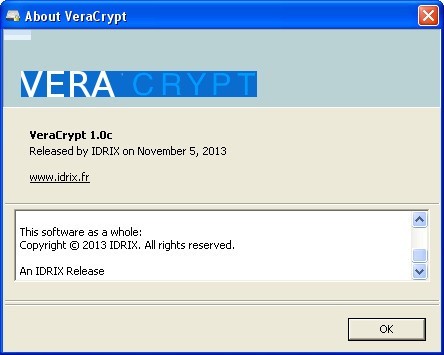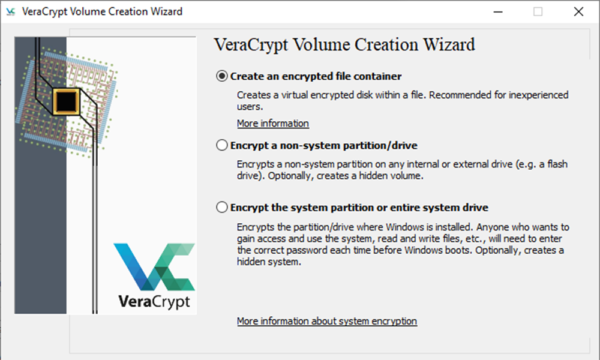


- VERACRYPT PRETEST FAILED UPDATE
- VERACRYPT PRETEST FAILED UPGRADE
- VERACRYPT PRETEST FAILED WINDOWS 10
- VERACRYPT PRETEST FAILED PASSWORD
It is a parameter that was introduced in VeraCrypt 1.12 and whose value controls the number of iterations used by the header key derivation function. PIM stands for “Personal Iterations Multiplier”. In Strong security for the Paranoid, VeraCrypt developers define this feature in the following way:
VERACRYPT PRETEST FAILED PASSWORD
When creating an encrypted disk, the user can opt to use a non-default number of hash rounds (this is used in the Key Derivation Function to turn the password string into a binary key). In addition to the choice of encryption algorithms and hash functions, VeraCrypt offers yet another dimension for securing the data. The same board delivers the speed of only 6.63 passwords per second if you know nothing about the hash function or the encryption algorithm. To give you an idea, the default combination (AES-256+SHA-512) can be attacked at a rate of 1140 passwords per second with a single NVIDIA RTX 2070 board. Very slow, even if the default combination of cipher and hash has been used. Either way, the attack is going to be slow. If you don’t know exactly which cipher and which hash function has been used to encrypt the container, you’ll have to try all of the 75 combinations during the attack starting with the default combination of AES-256 encryption and SHA-512 hash function. That makes it 15×5=75 possible combinations of symmetric ciphers and one-way hash functions to try. When encrypting the disk, users have the choice of 15 encryption algorithms (including combinations) and 5 hash functions. In VeraCrypt, information about the encryption algorithm or the KDF is never saved in the disk header. Depending on the hash algorithm and the number of hash iterations specified in the KDF, attacks may run faster or slower, but they never get particularly slow. Attacking BitLocker, LUKS or FileVault 2 is straightforward: read the disk header, figure out the encryption algorithm and KDF (Key Derivation Function), set up an attack and wait. It’s about the choice of hashing and encryption methods that aren’t stored in the disk header in any way. BitLocker, LUKS, FileVault 2 and multiple third-party tools can protect one’s data. There is no lack of encryption tools and crypto containers. The absolute requirement is that the encrypted disk or container is mounted (unlocked) during the RAM dumping process. If a running PC was acquired with an authenticated session during the time the encrypted container is mounted, you may be able to dump the content of the computer’s RAM into a file and scan that file for on-the-fly encryption keys used in multiple encryption tool (BitLocker, TrueCrypt, VeraCrypt, PGP disk and PGP WDE). The RAM imaging and key extraction attack described in this publication is aimed at live system analysis. Who is going to win this round? Applicability
VERACRYPT PRETEST FAILED UPDATE
A recent change in VeraCrypt made OTF key extraction harder, while the latest update to Elcomsoft Forensic Disk Decryptor attempts to counter the effect of the change. VeraCrypt has no known weaknesses except one: once the encrypted disk is mounted, the symmetric, on-the-fly encryption key must be kept in the computer’s RAM in order to read and write encrypted data. Supporting more encryption algorithms, more hash functions and a variable number of hash iterations, VeraCrypt is the default choice for the security conscious. Tried a number of times - same result.Released back in 2013, VeraCrypt picks up where TrueCrypt left off.

VERACRYPT PRETEST FAILED UPGRADE
VERACRYPT PRETEST FAILED WINDOWS 10
Permanently decrypted system volume and installed latest Windows 10 (=1703) update for designers - with VeraCrypt loader it could not update (there was error during Windows upgrade procedure after restart, so I had to decrypt and try to run upgrade on the system without VeraCrypt - this actually solved the problem).VeraCrypt 1.19 + Windows 10 (version 1.21 and all worked nice since that.With previous version of VeraCrypt (1.19) everything was fine:


 0 kommentar(er)
0 kommentar(er)
